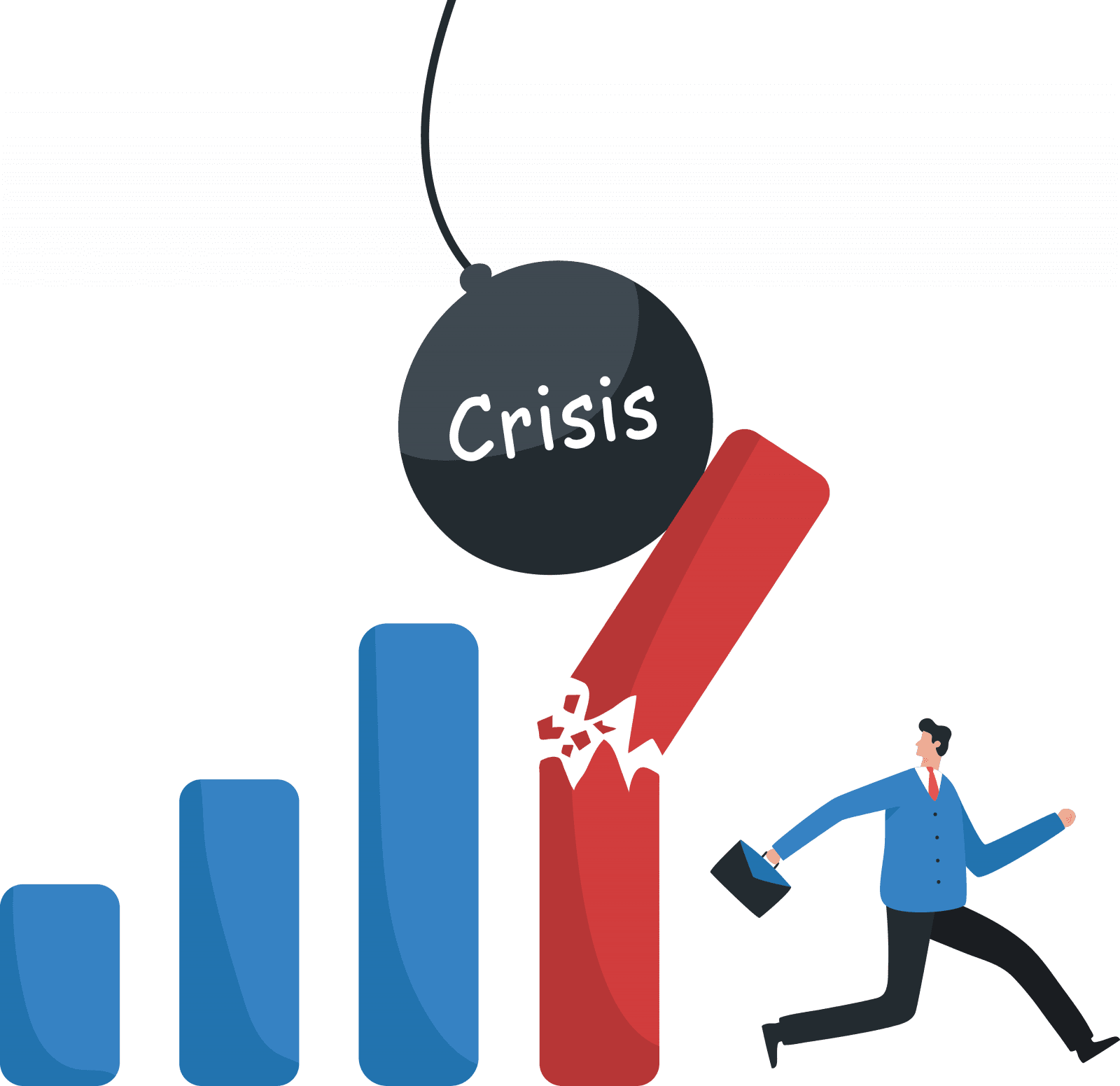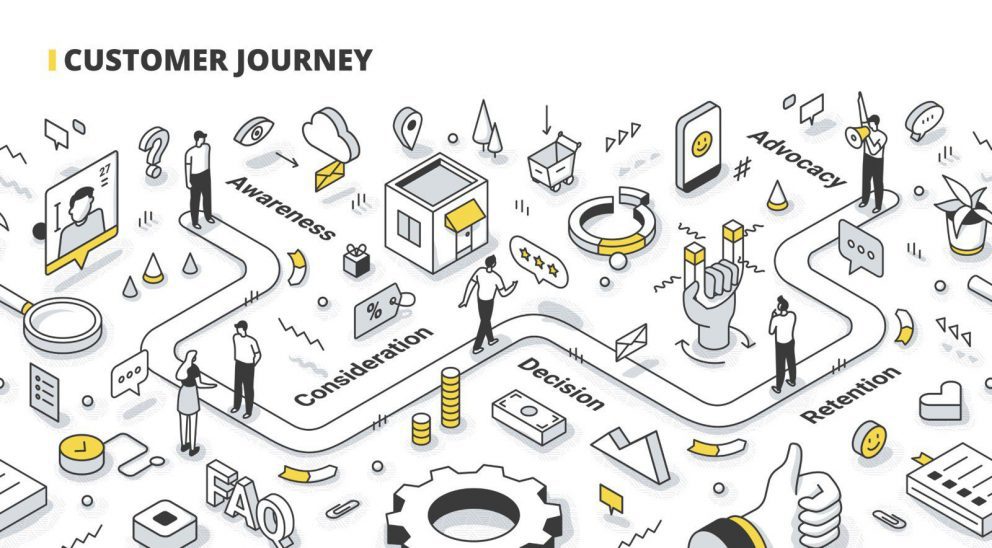Metrics, Market, and Multiplied Revenue: How to Grow During a Recession

By Maria Geokezas, Chief Operating Office at Heinz Marketing
It’s time to “batten down the hatches.” At least according to Jeff Bezos and other renowned economists.
Of course, when someone as well positioned to weather a recession as Bezos issues a warning, everyone listens. But businesses can’t hide through a downturn and hope for the best. Otherwise, they’ll miss a crucial opportunity.
After all, companies from Citigroup to Netflix flourished because of the last recession, not in spite of it. Instead of panicking, they saw the recession as the perfect occasion to refine their marketing initiatives. They uncovered what worked and doubled down on it.
If you haven’t already, you can adopt the same strategy for your business to insulate it from whatever happens next. Here, we look at three investments in time, talent, and treasure to fuel your business growth during an economic slump.
Shift Your Metrics to What Matters
When times are good, businesses chase leads for longer than they should. They extend mediocre campaigns in hopes of optimizing them along the way. They pay attention to metrics that aren’t directly connected to revenue—for example, placing an equal importance on email open rates and conversion rates when only conversions generate measurable returns.
Commonly, businesses fall into the trap of relying on vague top-of-funnel metrics, anticipating that a healthy portion of the leads will find their way to conversion. But when every cent matters, it’s time to change the metrics you use for decision-making.
Today, you need to look at the entire customer lifecycle from first engagement through attrition to determine what metrics primarily impact revenue. Then you can set your KPIs based on what activities produce the highest ROI instead of surface metrics. Often, growth in a down market shifts to higher-value customers, not the number of new customers. Thus, you’ll want to look for opportunities to generate additional revenue from a smaller pool.
That’s why, as business budgets tighten, it’s more critical than ever to know exactly who you’re targeting with your marketing campaigns. Or, you risk acquiring lower-value customers that cap your growth potential.
Focus on Your Ideal Leads
Largely, we cast a wider net when resources are plentiful. It becomes too easy to go after as many leads as possible instead of clarifying which leads present a win-win scenario.
A win-win customer is a customer for whom you can deliver unparalleled results, which also creates the greatest revenue opportunity for your business. These customers become your biggest promoters, perfect for producing targeted case studies and acting as referral engines—creating a flywheel effect.
These customers also provide an outline for what leads you should pursue in the future. Ultimately, your win-win customers should inform your ideal customer profile (ICP). If you don’t have an ICP–or you have a “lazy ICP”–you’re going to waste resources on pursuing the wrong customers.
Fortunately, creating an ICP and sharing it throughout your organization prevents your team from chasing accounts that aren’t the best fit. Your ICP must be specific, so consider including:
- Industry
- Location
- Number of Employees
- Revenue
- Growth Potential
- Retention Rate
- Lifetime Value (LTV)
- Net Promoter Score (NPS)
- Referrals
By creating a detailed ICP, your lead scoring improves exponentially. So rather than pursuing customers that may or may not be a good fit, you spend all your time focusing on only the high-value leads.
Keep in mind that customers scrutinize every decision tenfold when budgets shrink. They need to know without a doubt that you’re the right choice for them. Your customers aren’t in the market to test new solutions. Instead, when the market is shaky, they need a sure bet to get them through whatever happens next. You’ll have a customer for life if you provide a clear path to guide them through the chaos.
Map Your Customer Journey to Increase Lifetime Value
So, you identified what metrics matter and narrowed down your ideal customer profile. Now what? Now, you need to create a customer experience that makes them never want to leave.
It’s no secret that satisfied customers spend more—to the tune of 67% more than new customers. But they’ll only spend more if you make it easy for them.
Credit card companies are a prime example of understanding what customers want and handing it to them. Specifically, credit card companies offer tiered cards with targeted benefits. Some credit cards focus on cash back, and others on travel, so they can pinpoint a specific customer profile to market each offer. Then that customer happily pays higher fees for the perks that fit their goals.
Moreover, credit card companies that craft a customer experience have higher retention rates. For example, let’s look at Chase Sapphire, with a retention rate of over 90%. Not only are those customers keeping the credit card for years, but they’re often converting to Chase bank for their other personal banking needs. This is because the company makes it frictionless to slide deeper into the Chase family of products from the moment a person signs up.
We must ask ourselves how we can create the same experience for our customers if we want to grow through hard times, whether current or in the future.
Now’s not the time to chase every potential lead. Instead, it’s time to define your most valuable customers, how to attract more of them, and how you’ll keep them long-term. Remember, every business still needs to generate revenue. So, if you deliver results for your customers, they’ll keep coming back—recession or not.





